
At Vikela, every day was different. We were involved in everything from clearing roads, moving rocks to protect solar water pumps from elephants, and going on incredible bushwalks!

My week at Golola Rhino Orphanage was one of the most magical experiences of my life!

I spent hours reading through the website, project pages, and testimonials, each one more inspiring than the last. Even so, nothing could have prepared me for just how life-changing the next six weeks would be. From the lush wetlands of the Okavango Delta in Botswana to the wildlife rehabilitation centres and research projects of South Africa, every single stop on my journey was unforgettable!

Looking back, what made this journey so meaningful was how it offered a complete picture of conservation in practice!

We 100% would do something like this again; we didn’t even want to leave!

I really enjoyed both the educational and the social aspects. I made lifelong friends and learned so much.
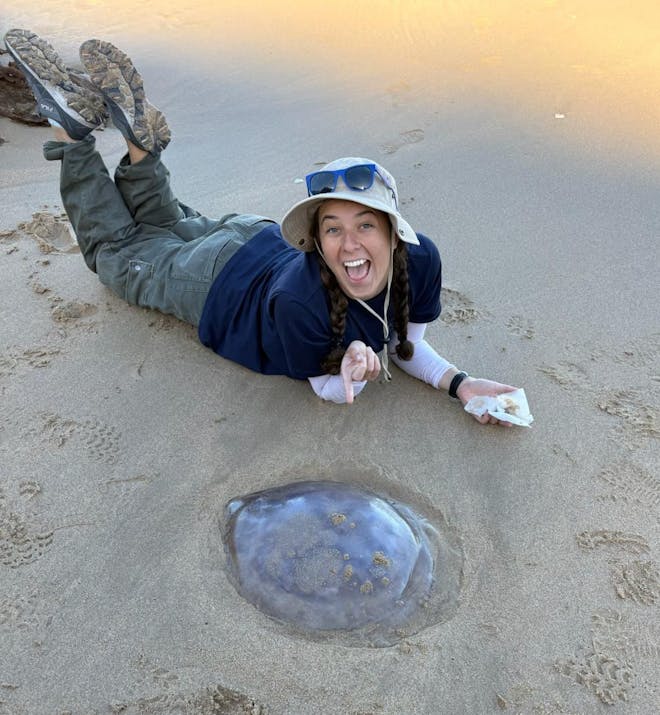
My time on the Coastal Conservation Project was absolutely wonderful.

From our very first call with the team, it was obvious that this wasn’t going to be anything like a typical safari experience. ACE offers something much deeper - the chance to actively take part in genuine, impactful wildlife conservation work alongside professionals in the field.

It made me realise things about myself that I perhaps hadn't known or realised. I feel more confident in myself now!

My first trip with African Conservation Experience (ACE) was only two and a half months ago and I knew I needed to go back, but this time was completely different

Visiting all three projects was an extremely worthwhile experience. I got to understand the differences between all three settings on a deeper level, from Phinda’s well-managed and fenced reserve, to the vastness of the Greater Kruger, to the remote expanses of the Okavango.

I always had this idea of what conservation looks like and how it should be done. After this trip, I walked away knowing that there is no singular right way to do it. There are many people doing different things, and combined, they all work together towards a better life for the natural world.

Volunteering through African Conservation Experience gave me the opportunity to not only care for these incredible animals but also to understand the bigger picture of conservation.

Truly, a trip of a lifetime. So here’s my advice: don’t let fear stop you. Book the ticket. Get on the plane. Let it change your life!

It truly was the trip of a lifetime – and maybe just the start!

I can't wait to come back. I already have an idea of which projects I would like to visit next… but Phinda will be the first project I come back to. I cannot recommend travelling to Africa enough!

I was born in South Africa, and we emigrated when I was very young. I wanted to come home, and this was one of the ways that I could do it. If you want a once-in-a-lifetime experience, then this is what you do.

Vet work in the African bush is a completely different experience to work in a European clinic. I have come home with new skills, incredible memories, and friends for life.

This trip has left me even more motivated to pursue a future in zoo-based conservation. This was more than just a volunteer trip; it was a real turning point for me, both personally and professionally. I’m so grateful to ACE for making it happen.

As an avid photographer, I loved being able to take so many incredible photos and fitting so many animals in one frame! The most unbelievable sighting of this project was a herd of over 100 elephants walking towards us as they were grazing.

I was constantly amazed by the wildlife encounters that we had, and also surprised myself by how quickly I adapted to being out in the bush.

When you support a project like this, you want to know it’s making a difference - and here, you can see it with your own eyes.

As a travel and hotel professional I have high standards. I know how important planning and logistics are and ACE are true professionals. Booking is so easy, and the call with the consultant was so helpful. This was a dream come true - and I loved every minute!

This was a trip of a lifetime and I am so thankful I made the decision to do this. If you are unsure about travelling - don't be. Just do it. You will be so glad you did!

If you are looking to volunteer in Africa, you know that going with ACE you will be supported every step of the way and we witnessed this countless times with the ACE team supporting multiple volunteers!

I travelled with African Conservation Experience (ACE) for my school studies, and to see whether a career in conservation could be right for me. I feel like I’ve made a real positive impact, and helped to conserve the wildlife and the land here.

The whole experience was amazing, everything from the people to the experience itself, to the jobs we were doing. If I had to use one word… it would be life-changing!

You are included from the moment you arrive. The staff really appreciated the help and made you feel so welcome and this trip opened my eyes so much!

If you’re passionate about wildlife conservation in Southern Africa and want to be part of a project that has a genuine, lasting impact, reach out to ACE.

Moholoholo and the Kruger offer unique and unforgettable experiences. If you’re thinking about volunteering with ACE, don’t hesitate, it’s worth it!

I want my family and friends to experience what we have experienced!

I was able to get up close and personal with the animals. I stepped off the beaten track and was exposed to the work the rangers do.

I was feeling disconnected and unmotivated… but after a quick online search and phone call I found myself spending a week at Golola Rhino Orphanage And Rehabilitation Centre. It was a life changing experience!

We completed monitoring drives and recorded various animal sightings. I really appreciated how much effort went into answering my questions.

From the first time I got in contact with them, to the time our party arrived in Johannesburg, ACE went above and beyond to support us. The adventure was nothing but perfect!

I feel like I could see the difference I was making by being there. I put my heart and soul into this work and gave back as much as I could and I felt so rewarded for this.

There's something for everyone at Phinda - whether you love birds, mammals, plants or ecosystems, you won’t be disappointed!

It was an experience I will never forget. We loved every minute of it!

I left South Africa with a real sense of fulfilment, knowing that my efforts contributed to an important cause. For those with an interest in conservation and a readiness to get involved, I highly recommend ACE!

I can't recommend ACE enough to anyone who is interested in travelling with purpose and wants to contribute while being hands-on with wildlife conservation.

There was someone to support me at every step of the journey and I knew that if I had any issues ACE were always on hand to answer queries on a call, or over an email. The team was exceptional!

I wouldn’t change anything from my experience at these projects because they are such a powerful thing to be a part of.

ACE are a remarkable organisation in finding ways of supporting conservation while matching the desires of those who would like to enjoy the experience of working within a game reserve.

The whole experience has been incredible, so I would highly recommend people considering it, to just go for it!

The feedback we have had from the students indicates to us that this trip was life-changing, leaving them with lasting memories.

We were busy every day with meaningful work, which made the experience much more engaging than the safaris I had been on.

The practical insights I’ve gained here go beyond what you can find in textbooks so, in my opinion, the experience is incredibly valuable!

This week has been one of the best experiences I’ve ever had.

If you're passionate about wildlife and looking for a volunteer experience that will leave you changed forever, I can't recommend ACE enough.
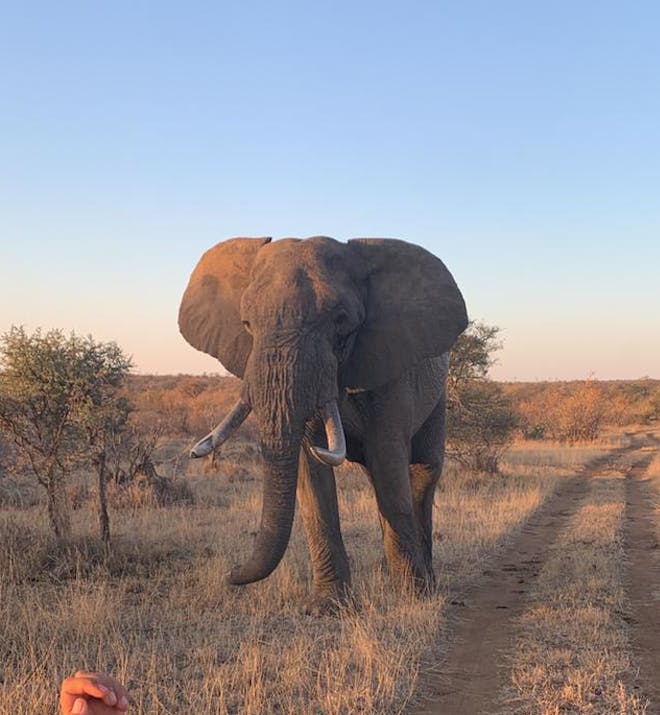
Getting to see animals in the wild is incredible, but observing them while on foot and being face-to-face with them is just a completely different experience to being in a vehicle

Everything I experienced here, from the amazing guide who took us, to seeing the animals in their natural habitats, is something I’ll never forget!

African Conservation Experience were incredibly supportive throughout the experience, which is very helpful when it is your first time travelling alone.

I have been very content working with cats and dogs in my daily work, but I now have a new perspective on veterinary medicine.

I'm now super interested in following in their footsteps and becoming a wildlife vet. This experience has completely changed my life!

If anyone is looking at doing these projects and wondering if ACE is the right organisation to go through, I can’t recommend it enough. When you are planning a trip like this it can be daunting, but the reviews for ACE are great for a reason!

We felt like we were actually helping the animals and the team without just standing there like we were just observers.

The person that I was before coming here, is the same person that I’m leaving behind. Everything that came with me is going back magnified.

If you’re considering a project like this, go for it! Approach it with an open mind and a can-do attitude. I loved every minute of my time in South Africa and am already planning to return for more projects!

At The Vikela Kruger Conservation Experience, I had a wonderful trip filled with various activities such as wildlife research, bush clearing, and wildfire protection. It was hard work, but also very educational!

I highly recommend volunteering with both Phinda and ACE! I am looking forward to returning in the future.

I had an amazing experience volunteering with ACE and would do it again in a heartbeat. They were incredibly organised, and there was always someone available to assist me at every step.

My advice is to volunteer if you can! You never know how long these environments and wildlife will be around. By volunteering, you not only get to see them but you can also help with their conservation.

I was able to compare the clinic in South Africa to the one in America where I work every day. It was awesome to see the different products they used, and the different procedures they did on small animals.

I thoroughly recommend African Conservation Experience whether you are a 13-year-old or a 70-year-old grandparent! If you are considering volunteering with ACE - just do it!

I would not hesitate to travel through the African Conservation Experience again. We hold ACE’s recommendations in high regard, and any chance to replicate our wonderful time at Phinda would be perfect!

If you are interested in conservation, this project is perfect for you! You can see the difference it's making for wildlife and the ecosystem you are working in.

We have gained an authentic understanding and a new perspective on many things, which we will carry with us forever. It was like watching National Geographic live!

As a volunteer, you felt like you were having a real impact on those animals' lives.
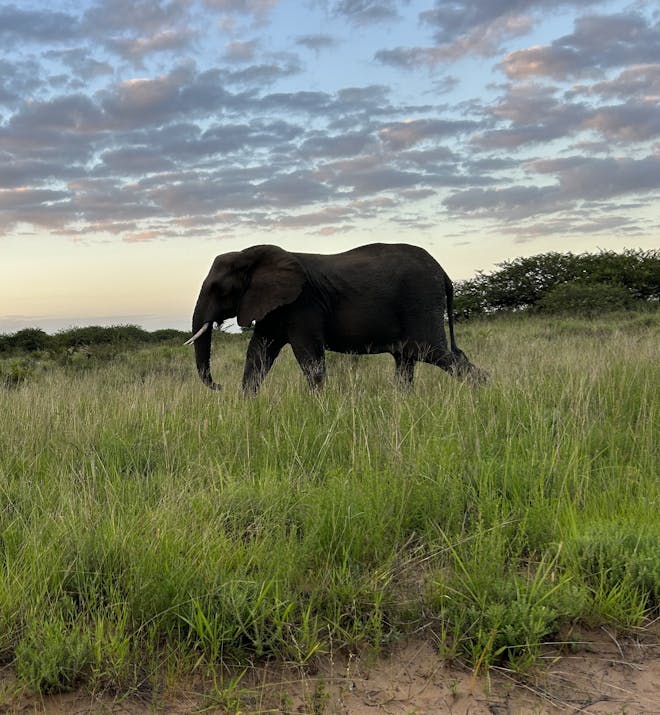
I gained a first-hand understanding of the amount of effort and time that goes into monitoring different species to ensure they remain healthy and genetically viable.

If you are looking to book a conservation project, ACE is 100% the way to go! You can rest assured every little detail will be taken care of and explained to you before the start of the trip through to the end.

There is always so much to learn and maybe some people think travelling solo at 78 is brave, but age is just a number! If you still feel young at heart volunteering is for you. Mind over matter. I do not think I came across a single activity while volunteering that I did not feel comfortable joining in!

My boyfriend and I went on a two-month experience with African Conservation Experience (ACE) and we had such an amazing trip! ACE were super easy to get in contact with during our experience and the team did such a good job at planning our trip and making us feel welcome throughout.

It was truly a privilege to work with the amazing team at Phinda. They were so inspiring, dedicated and willing to share their knowledge with volunteers.

Everything impacted me whilst I was there and I have grown as a person.

There are plenty of opportunities to learn, get an understanding of how things work, meet incredible people, get in touch with nature, and have breathtaking moments with the wildlife.

It felt like ACE knew Africa and really cared about projects that it worked with, which definitely turned out to be the case!

I have gained a huge amount of knowledge about tracking, wildlife, and the bush, thanks to the amazing guides I've had.

It was clear that the money that was being spent was going to the right places, so it gave me the confidence that the experience would be something that I was looking for.

By volunteering with ACE, I’ve been able to build my confidence so much, and it’s given me a huge amount of knowledge to help me with my university studies.

The most amazing thing about the whole trip is that I felt that in some small way, I made a real difference in conservation.

I felt safe at every project and made friendships with staff members and other volunteers that have lasted until this day. I would highly recommend volunteering through ACE at these projects!

It was an adventure that taught me so much, not just about the African wildlife but also about myself. This is an experience that will stay with me forever.

There was never a moment in my entire experience where I felt unsafe or unsure of what to do, I constantly had a guiding hand supporting me and helping me contribute to conservation.

ACE gives students the eye-opening opportunity to gain on the ground perspectives about conservation issues, such as the rhino poaching crisis, that can be difficult to understand and appreciate fully from a distance.

There have been a lot of highlights during my trip. One of the most memorable would be getting to observe elephants drinking water out of a pool near our camp.

This trip has confirmed my desire to pursue conservation as a career and has shown me that I want to support real wildlife projects and learn directly from those who work in conservation.
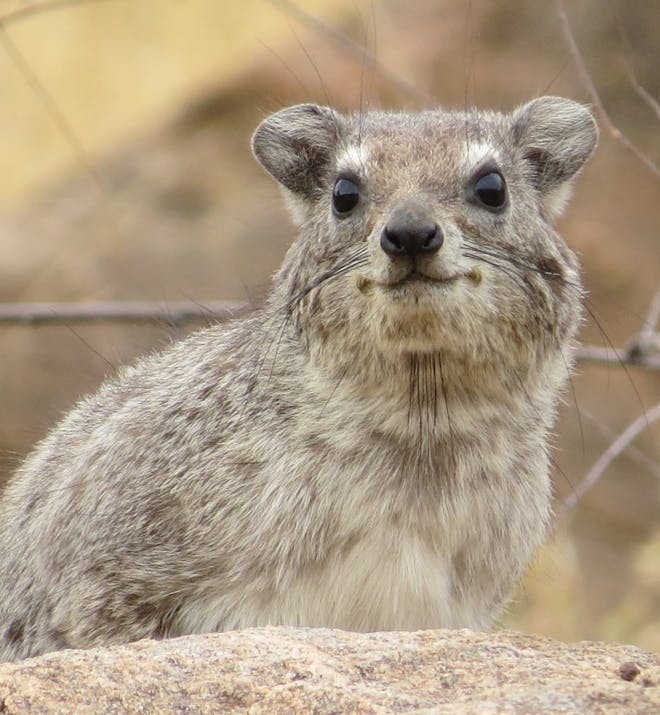
I've volunteered with African Conservation Experience (ACE) twice now, and it's been an amazing experience both times. It feels like a second home to me. Everything about the program is perfect, from the incredible locations to the volunteer work.

The most important thing I have learnt from this experience is to slow down and take everything around you. Volunteering at The Game Ranger Experience and having time away from social media and my phone has helped me as a person. It has also made me realise a lot about myself.

I decided to go with ACE because they were so detailed and helpful during the very personalised phone conversations I had with them, telling me about all of my options and following up with more information by email.

I cannot recommend these projects enough to anyone in or considering the veterinary field. They provide an authentic look into wildlife medicine in South Africa while allowing you to practice animal husbandry in a hands-on way.

The whole experience with ACE has made me realise that I want to go into wildlife conservation whether it's based in the UK or internationally.

You know your time, effort, and money is going to the right places, and you have had an actual hand in helping conservation.

I would highly recommend ACE and Moholoholo to people who really want to work to help animals. From fantastic communication, which gave us peace of mind while travelling to a foreign country, to information about credit cards, safety, and transport - it was phenomenal!

ACE definitely exceeded my expectations, I knew it would be well organised but I didn't realise just how organised they really were - everything was perfect!

I would recommend volunteering with ACE, as it was valuable to be able to speak with the staff on the phone before booking, to hone in on which projects I would be most interested in. From this, they tailor your trip to what you're looking for and what your needs are.

I would definitely travel with ACE again, and I’d love to volunteer at the variety of projects that they work with in the future! I feel like I could return time and time again and never stop learning.

We highly recommend African Conservation Experience to travel with for wildlife volunteer projects because they offer great learning opportunities; whether it’s for someone looking to go into the vet field, or someone just interested in wildlife in general.

Remembering our fantastic hands-on experiences, how well we were looked after by ACE, and knowing that our donations have gone to worthwhile projects just keeps us coming back.

African Conservation Experience is the company to travel with for wildlife volunteering because they are so organised and professional. They are wonderful!
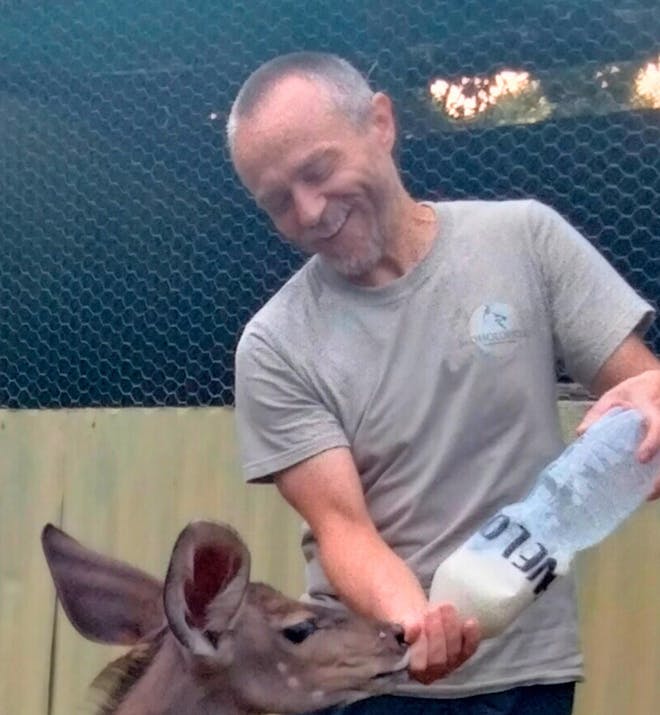
I would recommend this volunteer experience to anyone who would be interested in giving back while having a once-in-a-lifetime adventure. ACE was so great!

Being met by ACE at the airport when we arrived, and seeing us on our flight home, made the whole travel experience very easy!

African Conservation Experience fulfilled my expectations and much more. They were very personal, and I did not feel like I was just a client - It is almost like I am now a part of the team!

I would recommend visiting a couple of projects because they are all different experiences that challenge and educate you in different ways.

Combining both projects into one trip, was the perfect choice for me. I had the chance to witness my dream wildlife and actively contribute to their protection at Phinda, and at Golola, I felt like I made a meaningful difference in the lives of baby rhinos.

If you love rhinos, Golola is the place for you. Not only will you help take care of them at the orphanage but you will also aid in monitoring the free rhinos in the surrounding reserve, which all forms part of the conservation effort to protect them.

The level of support I received from ACE was great. I went to four different projects and I was completely looked after. The whole ACE team is always there for you!

I’ve always found it difficult to pinpoint a favourite part of anything, and with an experience like this I find it even harder. I truly loved every part of the trip as it offered such a wide variety of experiences.

I’ve seen so much, but I think the first moment of seeing that hyena on our second night, while eating in the camp, with it only being a few metres away from my tent, was really special.

It was like National Geographic coming to life. The knowledge that was shared with us was incredible and it made everything more understandable, relatable, and engaging. The expertise delivered to us gave us an appreciation for the whole natural journey.

Right at the beginning, there was someone waiting for us at the airport, which was really nice. All of the flights were organised, everything was really good with the transfers – we knew where and when we were going to get picked up. All easy, very easy, no stress at all!

ACE provided me with so much more than I could ever have dreamed of. This entire experience has raised the bar for me for future volunteering projects.

We got to assess all of the radiographs with the Supervet Noel Fitzpatrick for cranial cruciate ligament disease. It was so, so special, and my timing was just incredible and both the orphanage and Noel were amazing throughout.
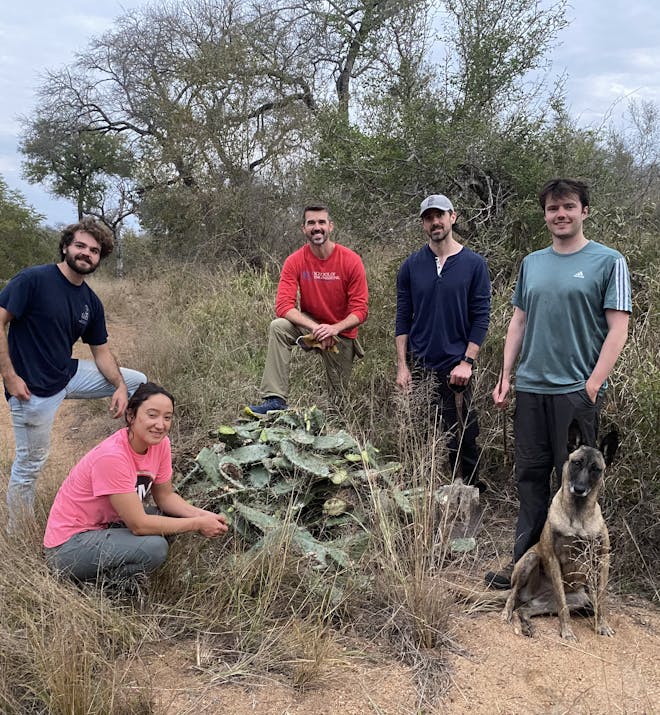
I’d recommend it to anyone wanting to experience a slice of life for a ranger sprinkled with lots of learning opportunities and seeing animals in their natural habitats!

The vet I worked with was an inspiration... He was very friendly, funny, and laidback, but also amazing at his job.

ACE gave me their full support by providing 24/7 support from the team in country and so I felt 100% safe, and this was enough to convince my parents to let me go.

My experience was amazing and I would book with ACE again without a second thought. They were really understanding and supportive throughout the whole booking process.

I can’t believe my two weeks at Moholoholo is over already! My experience at Moholoholo is going to be unforgettable.

The consultation and booking process was really personal and efficient and ACE made it easy for me to select the right projects. They are caring experts!

Everything at ACE was very well organised and they took care of all the travel arrangements within the areas to the smallest details.

Every day was somehow better than the day before. And it’s not just being with the rhinos but also the relationships you make with the team.

ACE gave me a lot of information on the projects so I could choose a project that fit my own interests. The team were happy to speak to my parents as well to address their concerns.

During my first consultation they helped me choose a project that would fit my own personal interests and goals. ACE guided me every step of the way. It’s not common for an organisation that arranges international experiences to be so involved with the person.

Every step of the way ACE was there for me, from the first phone call to arriving back in the UK after I finished my experience.

My trip was quite unique as I was already in South Africa but having ACE do my planning and itinerary to make sure everything went smoothly was the best!

ACE gave me a once in a lifetime experience and so many memories that I will never forget.

I would discuss my thoughts and plans with the ACE team and they helped to advise me on which projects would be best for a more comprehensive understanding of wildlife industries, which will go on to help me in the future. Whilst in South Africa, I was able to contact the ACE team 24/7.

The support provided was excellent, ACE were there 24/7! If I had a question they would always answer it very quickly.

I cannot thank the wonderful people at ACE enough for the unforgettable trip I had in South Africa.

ACE is more than just a facilitator to help get you out there, they truly care about your experience and happiness at the projects.

For me, volunteering was the beginning of what I want to do forever in my life.
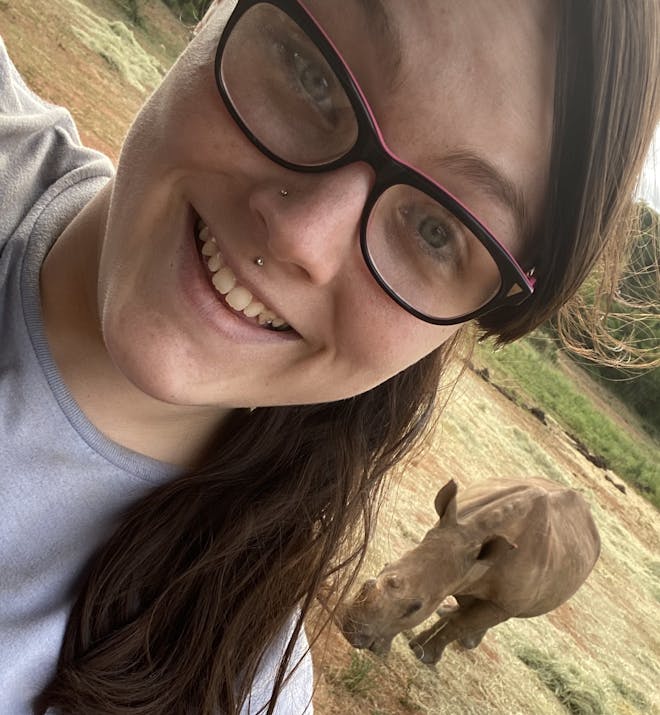
If you want to help conservation efforts, experience working in conservation, learn about animals, visit Africa and work hard, then this is the program for you!

It has been extremely hard to put my African experience into words. It was indescribable, and I have honestly never experienced anything so beautiful and breathtaking.

These people are the best people to work with. They know what they are doing and are very passionate about rhinos.

Meeting the baby rhinos on our first full day is something I will remember for the rest of my life, who knew that baby rhinos make such endearingly sweet noises!

If you are thinking about going, go! It is life-changing and it’s amazing to see how professional and dedicated everyone is on the project sites. To work with all kinds of people all around the world and to learn so much about the situation in Africa around the wildlife is fantastic.

This experience was a great choice, the staff at Moholoholo was absolutely wonderful, helpful and kind.

We had some very exciting close encounters with animals too. We helped track a particular black rhino, checking on its location the previous two days and then on the third day a helicopter was brought in and the vet darted it so that new ear and leg trackers could be fitted.
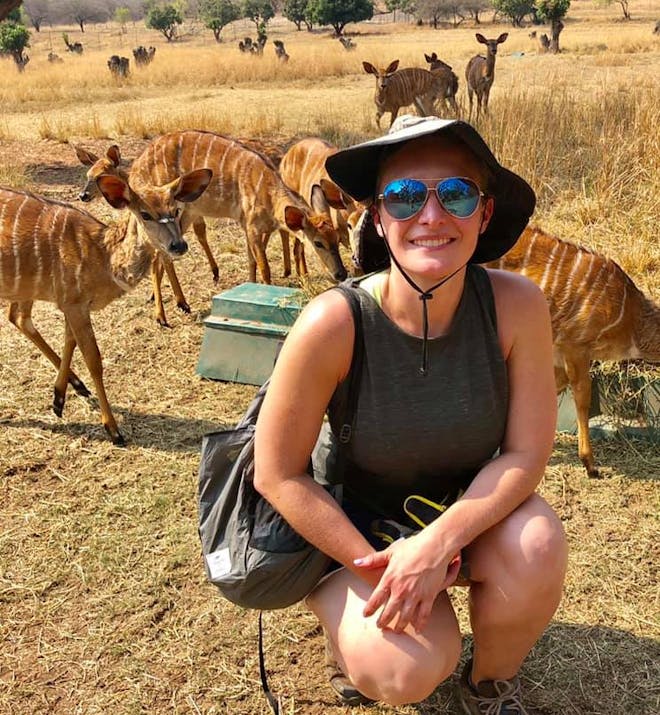
I have to say that my trip to Care for Wild was just a completely next level experience.

I think the most important thing to remember at Care for Wild is that you are there for the rhinos. It’s not a petting zoo or a photo shoot. You can take photos and admire them, but you are there to help them.

Yes, it is hard work. Yes, you will be tired. Yes, you will smell of dung, teff and milk. Yes, you will get up at early hours. Yes, you will endure cold showers. But trust me when I say it is all so worth it.

When I say “once in a lifetime experience” that barely scratches the surface of my amazing Care for Wild volunteer experience.

I highly recommend that anyone thinking about going to Africa to volunteer, does so with ACE, as they make sure your experience is what you want it to be.

My experience in South Africa was one of the best adventures of my life and one that will stay with me forever.

Each morning, there was always a challenge: finding the elephant who had an infection on his leg, or another elephant who had teeth surgery.

For me, surprisingly, the most rewarding aspect of this whole experience were the quiet moments. After an exhausting day coming back to camp, sitting by the fire you yourself made, as the sun sets and the brightest stars you’ve ever laid eyes on becomes visible above your head.

Overall, this part of my life so far has been my most cherished and if you choose to take this journey for yourself, you will not regret it.

I got an enormous amount of African wildlife experiences and my knowledge of the veterinary profession has been greatly improved. I highly recommend this to anyone and everyone interested in animals, not just veterinary medicine!

Although I was only able to spend a short time at Phinda, I am so happy that I got to be a part of the incredible efforts and learn so much about Africa and its wildlife.

I highly recommend anyone who wants to learn about wildlife conservation while getting hands on experience to go through the ACE team.

I chose to participate in the Shimongwe Wildlife Veterinary Experience because I am currently a pre-veterinary student in university and wanted to gain hands-on experience with wildlife veterinary medicine – and that is exactly what I got, so much hands-on experience!

If there’s one thing that I hope someone gets out of this, is that if you are considering going, but you are nervous, DO IT ANYWAY! This was the best experience of my life and so eye opening! I would go again in a heartbeat.

Coming back to camp from driving around the Okavango Delta logging animal and predator tracks only to find a whole herd of elephants grazing next to our camp was a highlight.

I would recommend this project to anyone who is thinking about working as a wildlife vet. You get a lot of hands on experience and also get to learn about common diseases and medications used in the field.

I work with animals on a day to day basis, but it has always been a dream to work with and interact closely with African species and to use my qualification and skills to make a difference. I chose ACE as I wanted to go somewhere ETHICAL – as this is very important to me – and I definitely found an ethical company!

We were amazed at how many cheetahs were visible not far from the road going through the preserve. We were also fortunate to participate in a cheetah de-collaring.

This project is a conservation project in the Okavango area and it’s been absolutely amazing. You feel like you really contribute. To nature. To the ecological environment. You get to see a lot of wildlife, a lot of different landscapes, amazing views and you just feel right at home once you arrive.

Within two days we all became best of friends, and they will be my friends for the rest of my life. We will never lose contact. What we have to bear in mind is they’re all half my age. There are no age barriers or culture barriers, you’re just in a situation where you automatically bond.

I’ve been back four times and each time my experience has been unique and exceeded all my expectations.

I would highly recommend the Shimongwe Wildlife Veterinary Experience to anyone with a veterinary background, whether that be a vet/vet student or veterinary nurse/nurse student, who has an interest in wildlife and conservation and wants to test themselves and take their veterinary skills and knowledge to the next level.

I had a very enjoyable three weeks in Botswana on an African Conservation Experience volunteer holiday.

This experience was amazing, I would highly recommend it to anyone, not only to those interested in veterinary but anyone who enjoys travelling and an adventure, wants to learn or just to see South Africa’s wildlife close up with a true feeling of the country.

There is something quite rewarding in meeting people who share your views about conservation and like you who are willing to put some of your own time into making some slight difference.

You won’t regret going to Phinda Private Game Reserve, and you won’t regret going through ACE.

My days with the vet were always full and exciting, with a new unexpected challenge each day; this could be a day trip to de-horn rhinos, capturing giraffe or staying back at the clinic looking after some cheetah cubs.

You can expect to see a huge range of wildlife on a regular basis and most drives are about tracking various species, notably the major predators, elephant and rhino!

We learn so much about ourselves and about the world when we travel. ACE ensured that my daughter’s first experience of travelling abroad on her own was amazing! I have no doubt that she will treasure the memories forever and the experience will give her the confidence to try new experiences in the future.

Would I say that the experience changed my life? Absolutely. You learn life skills and gain confidence you never thought you could in these experiences, and that is something I, personally, cannot thank the ACE team and the team I worked with in Phinda enough for.

So in the end, we learnt so much about the variety of things involved with wildlife conservation. The response and support from ACE on the ground in SA was amazing and if you ever get the chance to spend some time with Martin and the team, it’ll never be enough - they know so much and are so passionate about what they do!

I cannot put into words everything that I saw or did, for the trip seemed to pass in a blur of unforgettable experiences, each day better than the day before. The wildlife, the people, the place became home, and the hardest part of the trip was leaving.

It’s actually nature – everywhere. In Botswana, everything is so wild and pure, and you never know when the animals will appear from the thick bush.

The work the vets do to spread the message about conservation and the multiple chances they gave me to interact with wildlife, is beyond incredible and just being able to watch them, let alone get involved, is an absolute privilege.

Phinda was my third time with ACE and I am 77 years old! If you really want to be a volunteer with wild animals in Southern Africa, please contact ACE. They're great.

My experiences at Phinda were absolutely insane, I could never have imagined they would be as good as they were!

My time at Care for Wild Africa Rhino Sanctuary can best be described as life changing! It is a magical place.

Being able to work so closely with rhinos was incredible at Care For Wild Africa, whilst Phinda was one of the best experiences of my life.
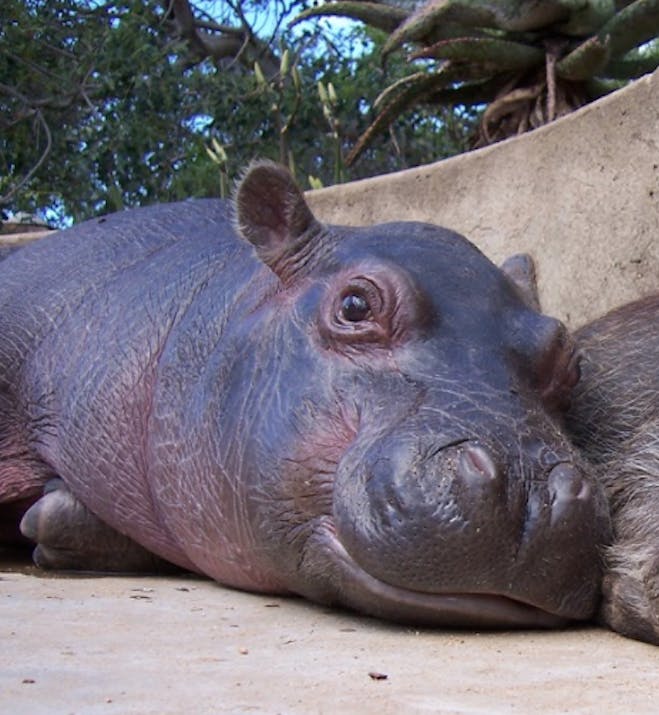
You won’t quickly forget a bushbaby landing on your shoulder on your way back from dinner, a fearsome honey badger lying on its back without a care in the world or falling asleep at night to the sound of lions roaring and hyenas laughing outside your window.

I would advise anyone with a sense of adventure and willingness to work in a team to have a look at volunteering on any of the ACE programs.

My experience at Phinda, in three words, was wonderful, unique, and enriching. The team from the researchers, ecologists, logistic, back-office, and our dear volunteers were all great people and supportive, and helped make my journey wonderful.

I have several great memories. Too many to single out any particular one; from seeing Wild Dogs in Nthaba, feeding the baby rhinos at Care for Wild, to the day in Kruger National Park. Fantastic!
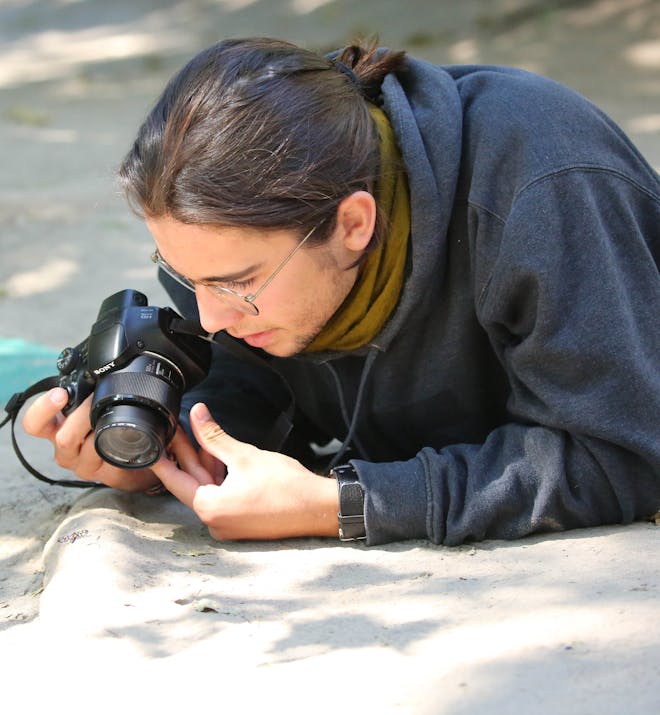
A real feeling of being out in the bush and at the same helping out for a great cause. The outcomes from this volunteering are retained for ever!

Life changing, inspirational and heart-warming are just 3 words to describe Care for Wild, but in all honesty, words cannot describe this experience, it’s phenomenal! Waking up to the sound of the resident lions and hippos helps with the early morning starts and the views from site are sensational.

I highly recommend the Shimongwe Wildlife Veterinary Experience to anyone considering applying. You will not only gain useful veterinary knowledge and skills, you will also create amazing and unique memories in an astonishingly beautiful country.

Sunset on the Okavango while watching the maribou storks and cormorants settle at the heronry for the night was awesome. We watched the sun’s rays slanting across the water colouring everything with its red glow and then fading as the sun dipped below the grasses and out of sight leaving us in gathering gloom and heading back to our island abode for dinner.

On my first day at Moholoholo I was involved in a rhino walk, which is as incredible as it sounds. We chaperoned a young rhino on a walk through the bush, providing him with exercise, mental stimulation and a bit of fun. This is just one of many unbelievable things that I was able to take part in.

The vet I was working with was an incredible teacher and always explained what he was doing and why. He always encouraged us to get involved and even let me take a ride in the helicopter!

ACE's continuous support made me feel like I was in very safe hands, particularly as it was my first time venturing beyond Europe. My time with ACE surpassed all expectations, and I feel that I am really fortunate to have experienced this first-hand.

One of the things that made this experience so exceptional was the incredible diversity of veterinary work I was exposed to. Every day brought a fresh challenge and a new opportunity to learn.

We decided to do the veterinary experience trip and to stay for 2 weeks. Let me tell you, 2 weeks flew by! We worked with a variety of animals, and we also got to meet and work with amazing people there. Africa is an amazing place to go and I can not wait to go back!

Huge thanks to the vet team in Hoedspruit for welcoming me and teaching me so much valuable information that will transcend into the rest of my veterinary career. Also, thank you to African Conservation Experience for setting up this wonderful experience! Counting down the days when I can return!

To truly get a feel for just how special a place Phinda is you must go and experience it for yourself - you won't regret it.

African Conservation Experience has given me the opportunity to be part of dedicated teams helping preserve wildlife and its habitat. It has been a wonderful experience and I will continue to volunteer my time to conservation programs.

The ACE team and the Phinda locals have provided me with memories that will last a lifetime and an endless amount of stories that I will forever treasure!

Some days we would be transporting buffalo to various camps, and so the vet would go up in the helicopter and dart the buffalo from the air. We would then chase down the buffalo by truck and transport them out of that camp and into another. This was truly exhilarating.

For a full month at Okavango, I had the opportunity to assist in vital research, documenting species presence on the Kwatale conservancy. We had some truly special sightings while there.

At Phinda our lives were enriched by the knowledge of our team leader in the many facets of wildlife management, whilst working with the wildlife veterinarians at Shimongwe was AWESOME. We were able to be a part of a team capturing wild animals for medical treatment, ID chip placement, and relocation.

I could talk for hours and hours about the many adventures I was lucky enough to undertake during my placements with ACE, I still haven’t finished telling my friends and family everything! The amazing sense of accomplishment and pride I feel whenever I look back at what I’ve learnt and been privileged to be a part of is unfathomable.

Although many of the students on my trips are biology majors, I have had several education majors and they have commented to me how much they learned with little background in the sciences.

Having personally overseen the coordination of these field courses with colleagues at ACE for a number of years, I can testify that the service provided by the ground staff both in the UK and in southern Africa is second to none.
How to submit your African Conservation Experience review
If you have volunteered with us and want to tell your story to future conservation travellers, we’d love to hear about your African Conservation Experience. So please get in touch with us by emailing reviews@conservationafrica.net
Here are a few helpful tips to get started:
- Flesh out your story – tell readers more about when you volunteered, who you went with and all the exciting activities that the project included.
- Include useful tips – from travel arrangements to accommodation and day-to-day life, share relevant facts and recommendations about your experience.
- Highlight intriguing details – think about any unexpected wonders that you encountered during your time in Africa. This is your chance to tell people about them!
- Share your snaps – make sure you include any pictures and videos you took during your experience. They will help bring the experience to life for future volunteers.
We look forward to hearing about your African Conservation Experience!
Why read our reviews?
Our travellers’ reviews offer fascinating insights and details about their conservation experiences and stunning pictures of the African wildlife they encountered, giving you a unique insight into the type of work we do and to help you pick the right program or create a tailored combined experience.
Follow our travellers on the adventures of their lifetime as they recount working on our wildlife conservation projects. From wildlife rehabilitation, research and veterinary experiences alongside professional vets to marine conservation and group voyages into the wild, our programs are always a trip to remember!
Why travellers submit their reviews
Maybe it opened their eyes to the reality of wildlife conservation in modern-day Africa. Perhaps it was the first time they’d travelled off the beaten track and far from the tourist crowds. Or they gained practical experience and insights into conservation science to take forward in their studies or careers.
Inspired by the experience, they want to share their story, tell everyone about the stunning locations and awe-inspiring animals they came across. In addition to the thrilling details of their journeys, our conservation travellers also share helpful tips, unique details and recommendations.
As well as written stories, our travellers include a myriad of media in their conservation experience reviews. Breath-taking images, mesmerising videos and even podcasts perfectly capture the spirit of their journey in a way that words alone rarely could.
About our African Conservation Experience reviews
The African Conservation Experience reviews above were written by our past volunteers. From university students and gap year travellers to meaningful travellers and those taking a sabbatical, our participants tell all about their experience in the real world of wildlife conservation.
No matter the age and occupation of our travellers, the thing that really ties them together is the amazing memories they make on their trip.



